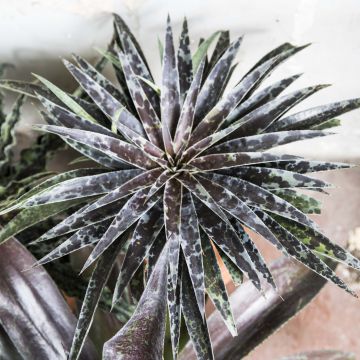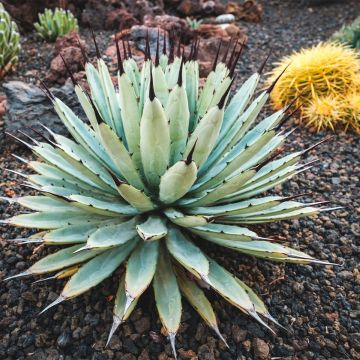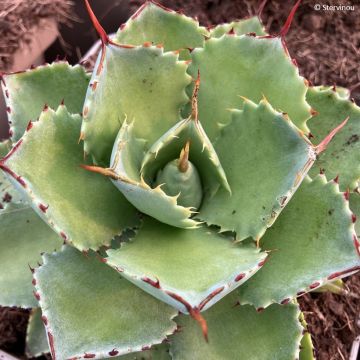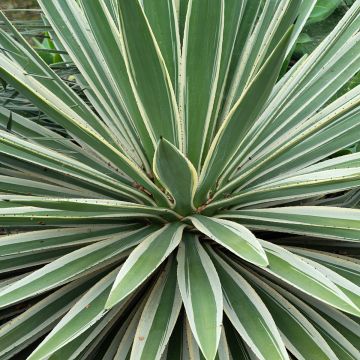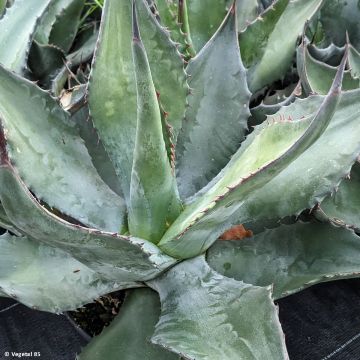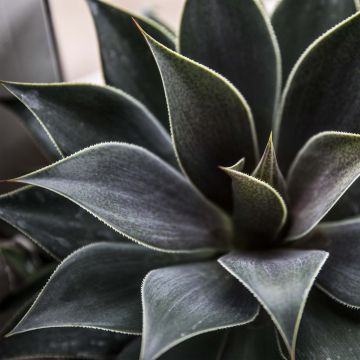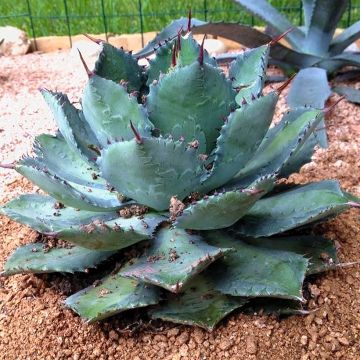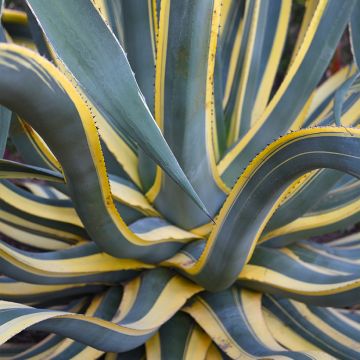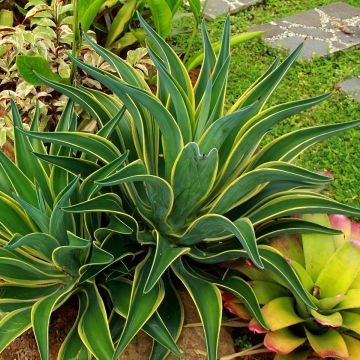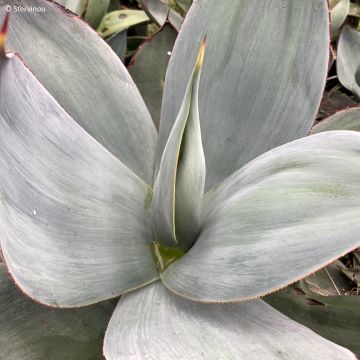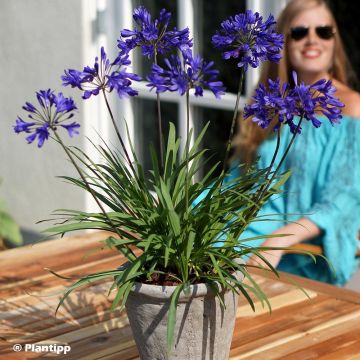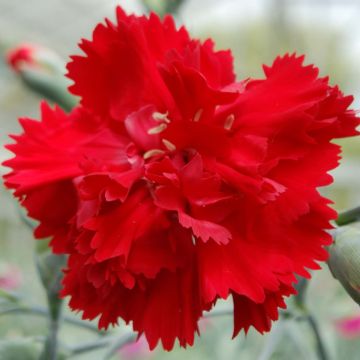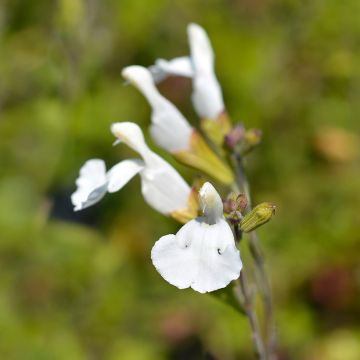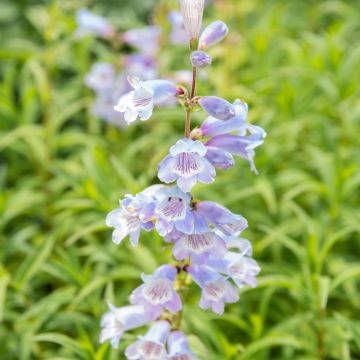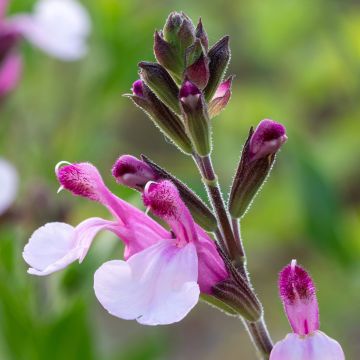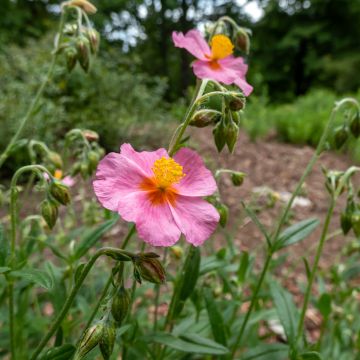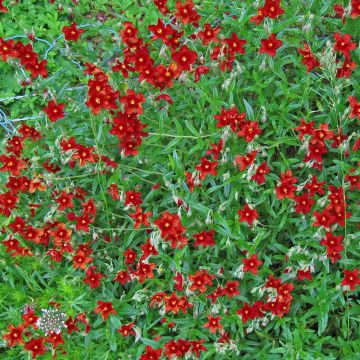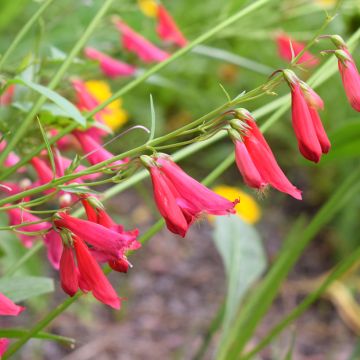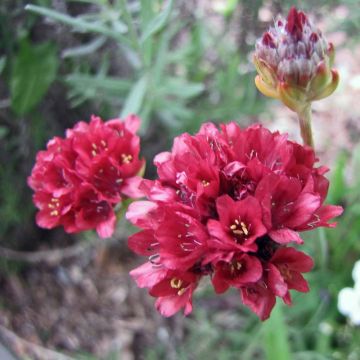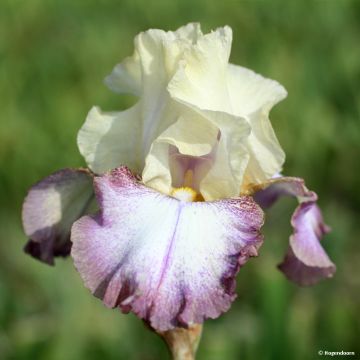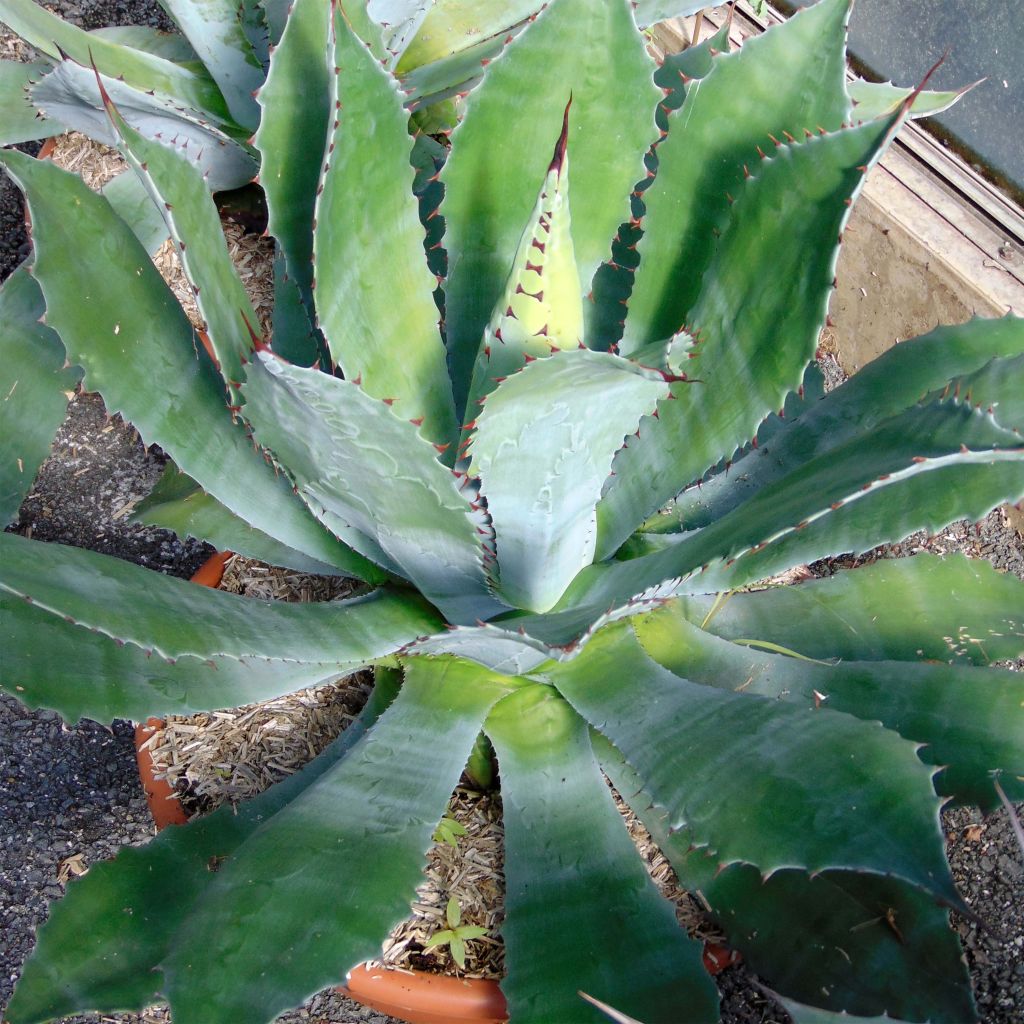

Agave parryi neomexicana - Agave de Parry
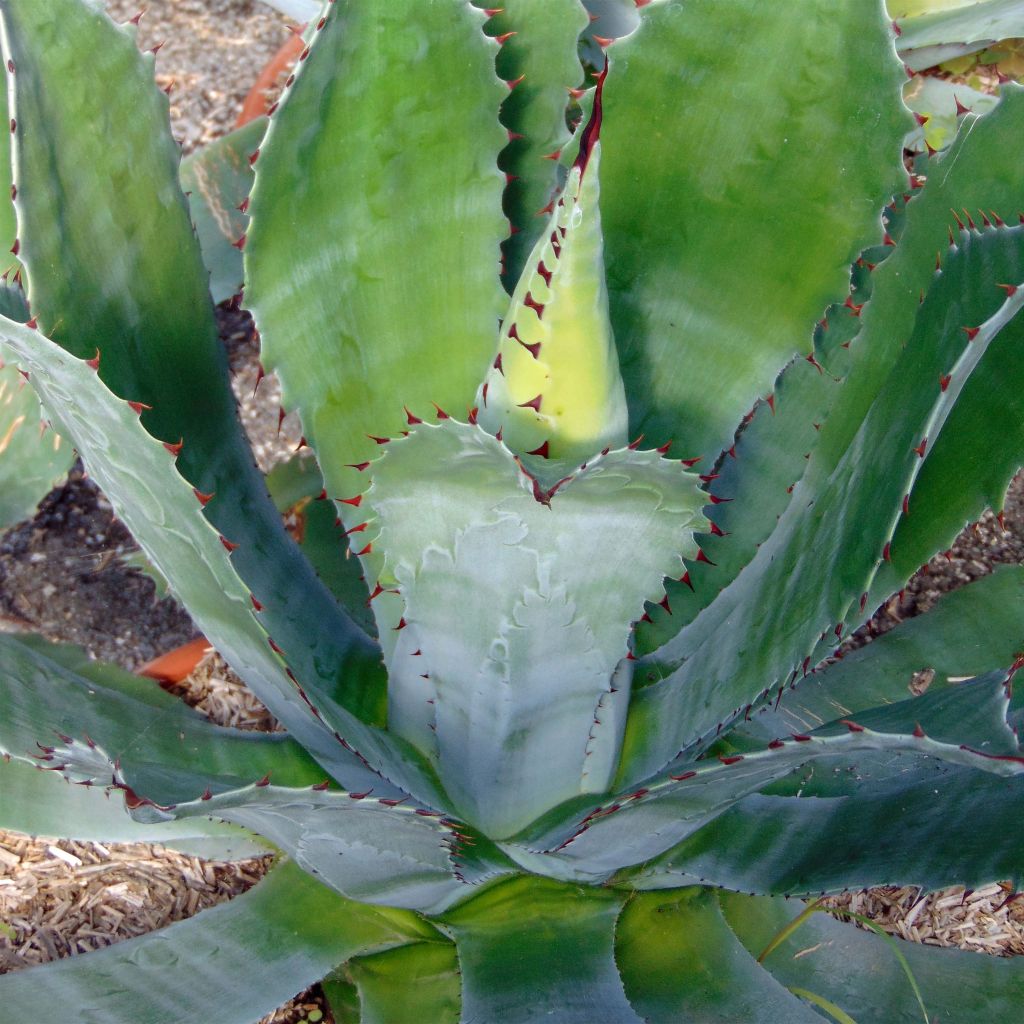

Agave parryi neomexicana - Agave de Parry
Agave parryi var. neomexicana
Agave parryi var. neomexicana
Well received. Beautiful young plant that has grown well during the summer.
Isabelle A., 01/09/2018
This item cannot be shipped to the selected country
Delivery charge from €5.90
More information
Schedule delivery date,
and select date in basket
This plant carries a 12 months recovery warranty
More information
We guarantee the quality of our plants for a full growing cycle, and will replace at our expense any plant that fails to recover under normal climatic and planting conditions.
From €5.90 for pickup delivery and €6.90 for home delivery
Express home delivery from €8.90.

Does this plant fit my garden?
Set up your Plantfit profile →
Description
Agave parryi subsp. neomexicana is part of a tribe of agaves capable of withstanding very severe frosts, around -25°C (-13°F) in dry soil. It is a subspecies of Parry's Agave, from which it differs mainly in the number of leaves that make up its rosette, as well as in their oval shape, which is less tapered, bordered in black, with each bearing a superb terminal spine of the same colour. The plant is of medium size for the genus and develops into a well-organised rosette of light grey-green colour with bluish reflections. The summer flowering, in a panicle reaching 3m (10ft) in height, signifies the death of the plant which will have taken care to produce numerous daughter rosettes. This agave will naturally structure a minimalist, mineral, exotic setting in a dry garden as well as on a south-facing terrace.
Native to a small location in the Organ Mountains, in the state of New Mexico in the USA, Agave parryi subsp. neomexicana is part of those agaves propagated in cultivation by enthusiasts always looking for exotic plants capable of surviving our cold and humid winters. This slow-growing botanical species is adapted to semi-desert climates. It belongs to the Asparagaceae family (formerly Agavaceae), just like yuccas or tuberose. This perennial herbaceous succulent plant has rhizomes capable of producing suckers, but it is almost devoid of aerial stems. Like a big cabbage, it is composed of numerous leaves overlapping each other, superimposed like roof tiles, forming a basal rosette, tall and wide at maturity, measuring 60cm (24in). The oval-shaped leaves are smooth, rigid, thick, light grey-green with bluish reflections, and bordered by rather red spines in young plants, becoming black over time. The end of each leaf is equipped with a sharp spine, black to red in colour, shiny, and formed by the fusion of margins of the same colour. This pretty dark border enhances both the colour of the leaves and the silhouette of the plant. When a rosette is mature, after many years, it produces a flowering stem reaching 3m (10ft) in height. It bears some horizontal branching. The branches bear flat and spherical panicles, 7 to 10cm (3 to 4in) wide, composed of a myriad of small red buds. The semelparous rosette dies after flowering, which lasts several months, having taken care to produce many small peripheral rosettes to ensure its perpetuity. This species forms numerous suckers from a young age.
Cultivable in many regions, this agave will suit a large rockery, or placed at the edge of a dry garden, where its unique architectural presence will beautifully dress a minimalist decor punctuated by some wild grasses such as Stipa ichu or Stipa gigantea. It can be planted with prickly pears, giant fennel, Nolina hibernica, and quite hardy candle cacti (Cleistocactus strausii, Cylindropuntia imbricata), which are all equally undemanding plants. This agave can also be grown in a very large pot on a terrace, carefully choosing the sunniest spot, protected from winter rains, to recreate an exotic scene.
Agave is an edible plant, used in Mexico to make mescal, an alcoholic beverage obtained by fermenting its juice rich in sugars. It is also used in traditional medicine in Mexico, Brazil, and India, and has proven antifungal properties. Very attractive to bees and nectar-seeking insects, the inflorescences attract many pollinators.
Report an error about the product description
Agave parryi var. neomexicana in pictures
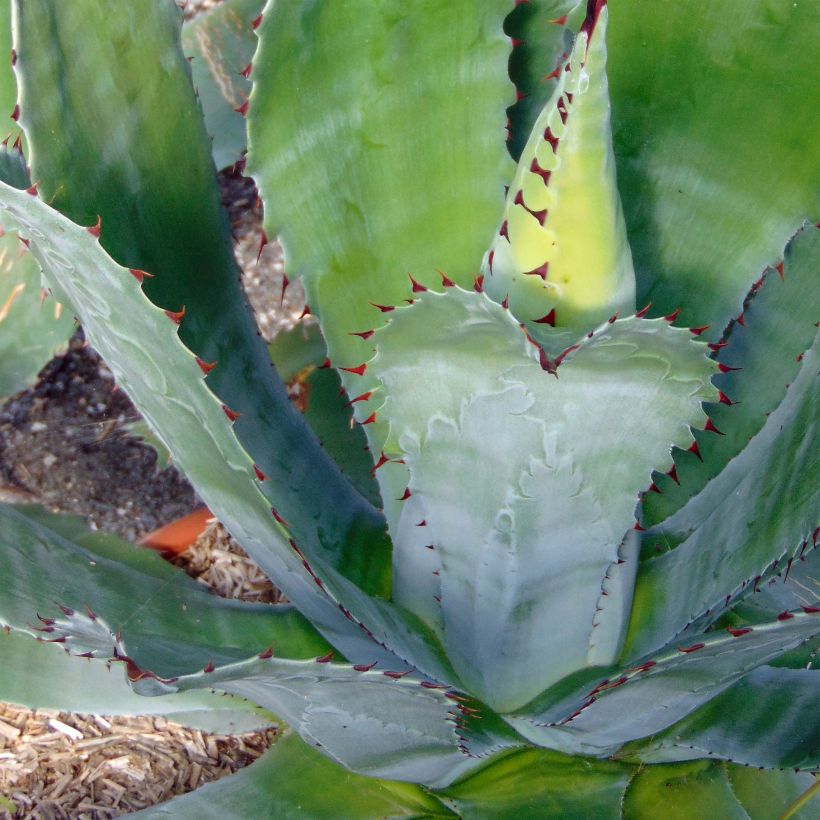

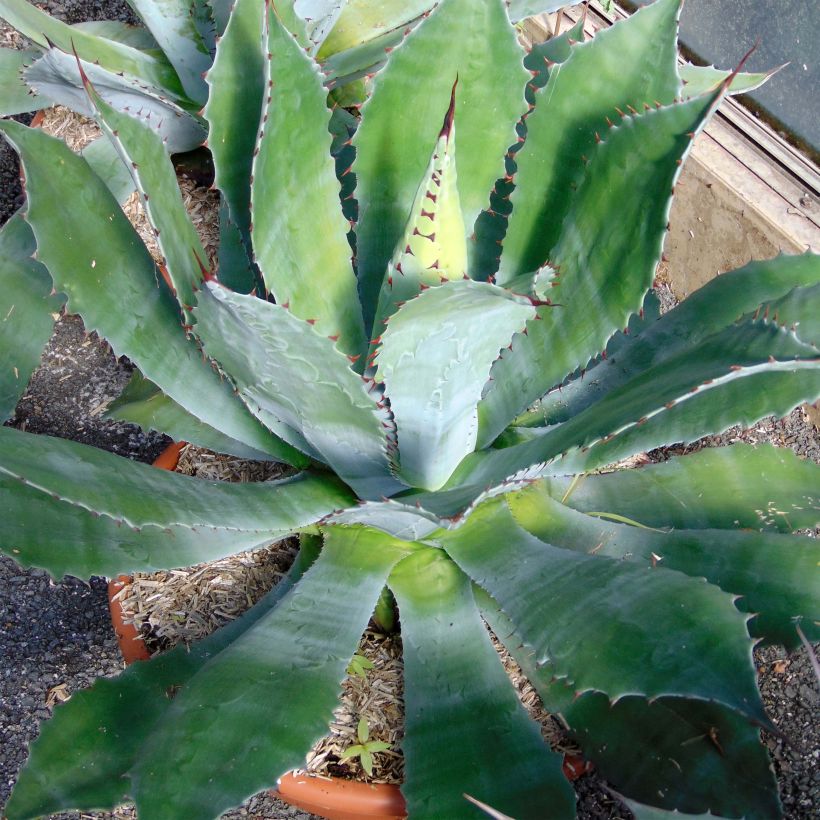

Flowering
Foliage
Plant habit
Botanical data
Agave
parryi var. neomexicana
Agavaceae
North America
Other Agave
Planting and care
Position in full, scorching sun on a slope or dry embankment. Plant in well-drained poor, rocky, limestone, sandy soil. It is remarkably hardy in dry soil. However, it does not tolerate an excess of humidity, common in clayey and heavy soils, combined with severe cold. Since it perfectly tolerates dry, even arid soils in summer, it is possible to dig a 50cm (20in) hole and fill it with a mixture of rocks and light soil. Plant the agave, ensuring its collar is isolated from stagnant water. A generous but spaced watering will suit it perfectly to help it establish itself. The drier the soil, the more it will resist frost, up to about -20°C (-4°F). To ensure excellent hardiness in open ground, place a rigid plastic sheet or a glass bell above the plant so that rainwater does not penetrate to the core during winter.
Cultivation in pots:
Since the plant has a fairly modest growth, it can be grown in a pot (preferably terracotta) on a terrace or balcony, in a light substrate such as cactus soil, with particularly careful drainage. It will then be easy to store the pot away from strong frosts and humidity, in a bright, airy, minimally heated space (between 0 -5°C (32 and 23°F)). Reduce or even stop watering in winter. The plant can spend April to October outdoors. When you take it out, gradually acclimatise it to the sun to avoid leaf burns. Place in partial shade for 2 to 3 weeks before facing full sun.
Planting period
Intended location
Care
-
, onOrder confirmed
Reply from on Promesse de fleurs
Mediterranean perennials
Haven't found what you were looking for?
Hardiness is the lowest winter temperature a plant can endure without suffering serious damage or even dying. However, hardiness is affected by location (a sheltered area, such as a patio), protection (winter cover) and soil type (hardiness is improved by well-drained soil).

Photo Sharing Terms & Conditions
In order to encourage gardeners to interact and share their experiences, Promesse de fleurs offers various media enabling content to be uploaded onto its Site - in particular via the ‘Photo sharing’ module.
The User agrees to refrain from:
- Posting any content that is illegal, prejudicial, insulting, racist, inciteful to hatred, revisionist, contrary to public decency, that infringes on privacy or on the privacy rights of third parties, in particular the publicity rights of persons and goods, intellectual property rights, or the right to privacy.
- Submitting content on behalf of a third party;
- Impersonate the identity of a third party and/or publish any personal information about a third party;
In general, the User undertakes to refrain from any unethical behaviour.
All Content (in particular text, comments, files, images, photos, videos, creative works, etc.), which may be subject to property or intellectual property rights, image or other private rights, shall remain the property of the User, subject to the limited rights granted by the terms of the licence granted by Promesse de fleurs as stated below. Users are at liberty to publish or not to publish such Content on the Site, notably via the ‘Photo Sharing’ facility, and accept that this Content shall be made public and freely accessible, notably on the Internet.
Users further acknowledge, undertake to have ,and guarantee that they hold all necessary rights and permissions to publish such material on the Site, in particular with regard to the legislation in force pertaining to any privacy, property, intellectual property, image, or contractual rights, or rights of any other nature. By publishing such Content on the Site, Users acknowledge accepting full liability as publishers of the Content within the meaning of the law, and grant Promesse de fleurs, free of charge, an inclusive, worldwide licence for the said Content for the entire duration of its publication, including all reproduction, representation, up/downloading, displaying, performing, transmission, and storage rights.
Users also grant permission for their name to be linked to the Content and accept that this link may not always be made available.
By engaging in posting material, Users consent to their Content becoming automatically accessible on the Internet, in particular on other sites and/or blogs and/or web pages of the Promesse de fleurs site, including in particular social pages and the Promesse de fleurs catalogue.
Users may secure the removal of entrusted content free of charge by issuing a simple request via our contact form.
The flowering period indicated on our website applies to countries and regions located in USDA zone 8 (France, the United Kingdom, Ireland, the Netherlands, etc.)
It will vary according to where you live:
- In zones 9 to 10 (Italy, Spain, Greece, etc.), flowering will occur about 2 to 4 weeks earlier.
- In zones 6 to 7 (Germany, Poland, Slovenia, and lower mountainous regions), flowering will be delayed by 2 to 3 weeks.
- In zone 5 (Central Europe, Scandinavia), blooming will be delayed by 3 to 5 weeks.
In temperate climates, pruning of spring-flowering shrubs (forsythia, spireas, etc.) should be done just after flowering.
Pruning of summer-flowering shrubs (Indian Lilac, Perovskia, etc.) can be done in winter or spring.
In cold regions as well as with frost-sensitive plants, avoid pruning too early when severe frosts may still occur.
The planting period indicated on our website applies to countries and regions located in USDA zone 8 (France, United Kingdom, Ireland, Netherlands).
It will vary according to where you live:
- In Mediterranean zones (Marseille, Madrid, Milan, etc.), autumn and winter are the best planting periods.
- In continental zones (Strasbourg, Munich, Vienna, etc.), delay planting by 2 to 3 weeks in spring and bring it forward by 2 to 4 weeks in autumn.
- In mountainous regions (the Alps, Pyrenees, Carpathians, etc.), it is best to plant in late spring (May-June) or late summer (August-September).
The harvesting period indicated on our website applies to countries and regions in USDA zone 8 (France, England, Ireland, the Netherlands).
In colder areas (Scandinavia, Poland, Austria...) fruit and vegetable harvests are likely to be delayed by 3-4 weeks.
In warmer areas (Italy, Spain, Greece, etc.), harvesting will probably take place earlier, depending on weather conditions.
The sowing periods indicated on our website apply to countries and regions within USDA Zone 8 (France, UK, Ireland, Netherlands).
In colder areas (Scandinavia, Poland, Austria...), delay any outdoor sowing by 3-4 weeks, or sow under glass.
In warmer climes (Italy, Spain, Greece, etc.), bring outdoor sowing forward by a few weeks.

































